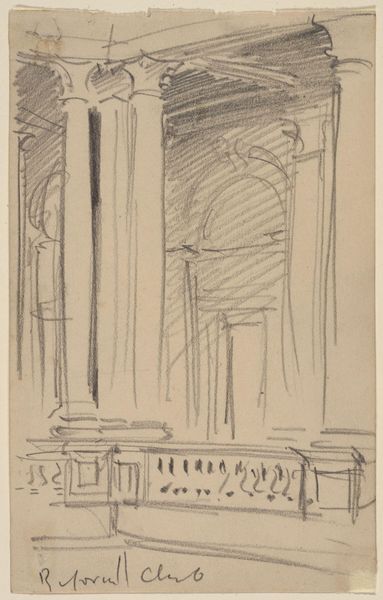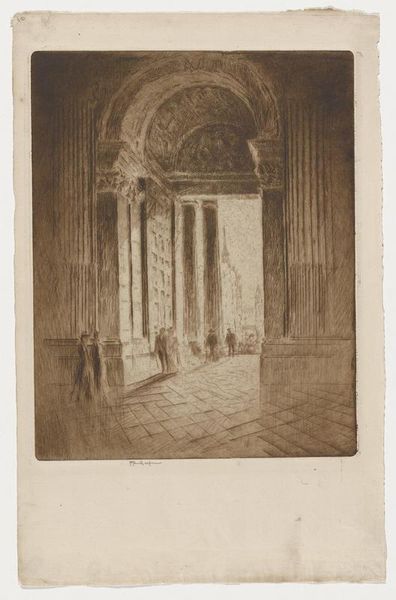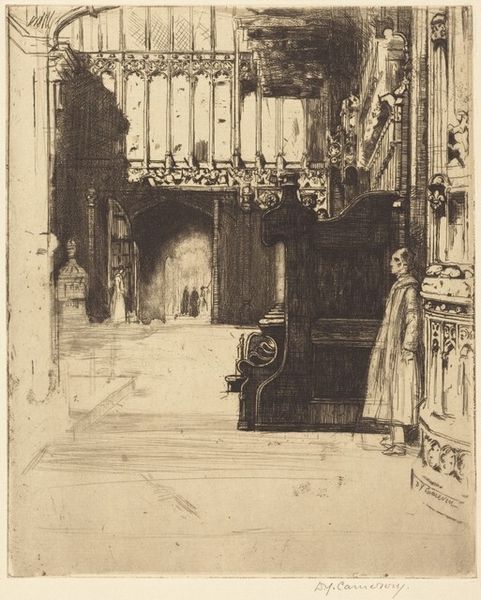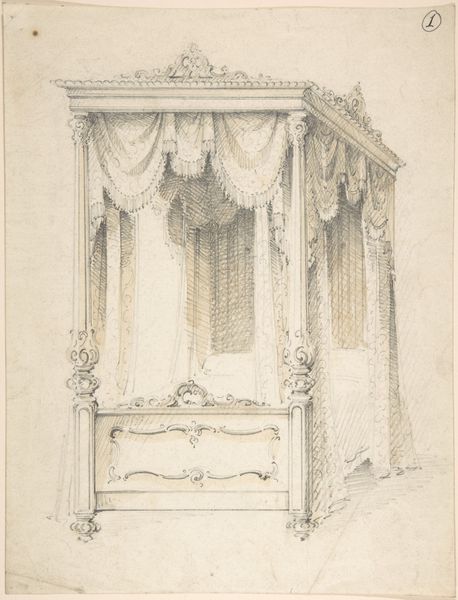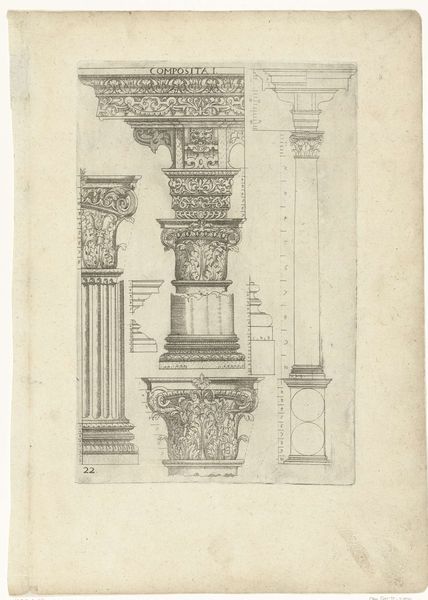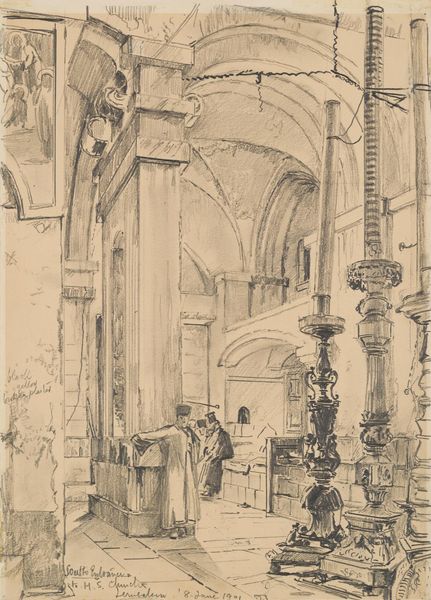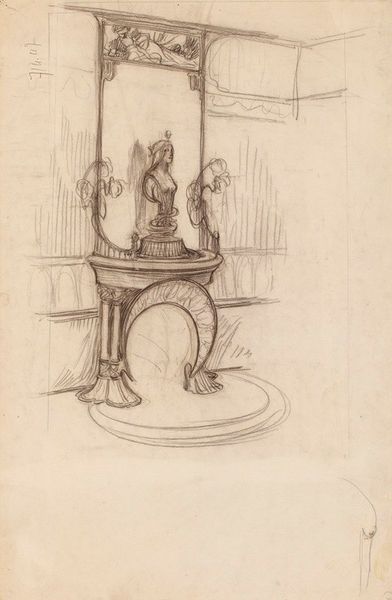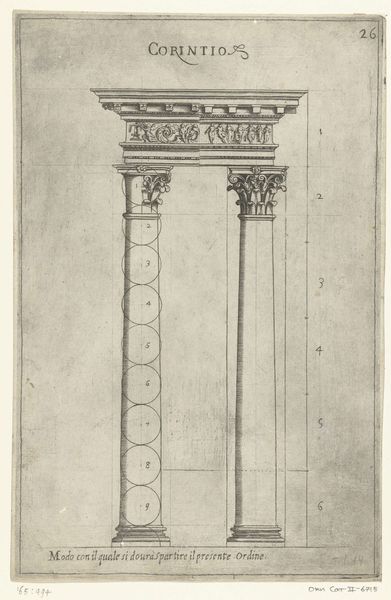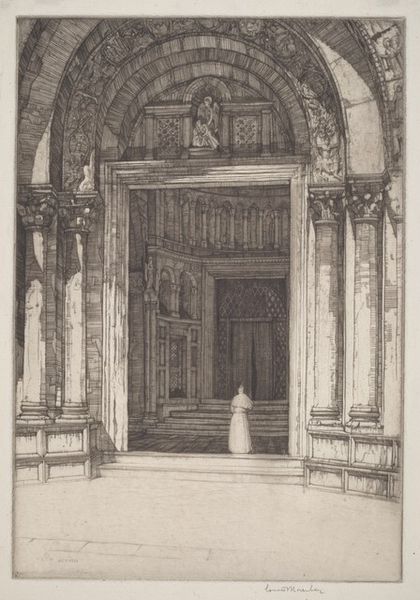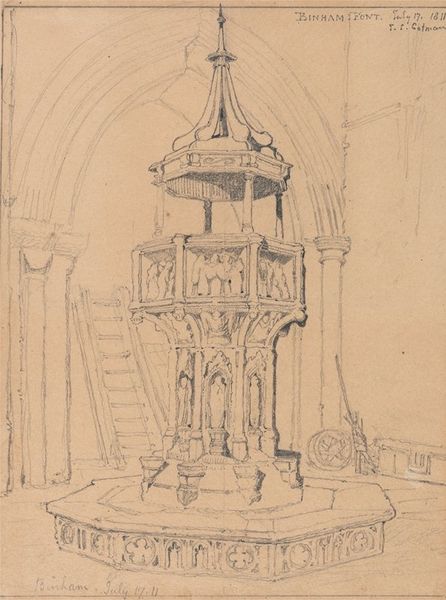
drawing, pencil, architecture
#
drawing
#
medieval
#
pencil sketch
#
landscape
#
romanticism
#
pencil
#
architecture
Copyright: Public Domain: Artvee
Editor: So, here we have "Pulpit in South Burlingham Church, Norfolk," a pencil drawing from 1816 by John Sell Cotman. The level of detail in rendering this architectural structure is astounding; the light and shadow feel both soft and precise. I'm especially drawn to the intricate carvings. What do you make of this piece? Curator: Well, it’s more than just a pretty picture, isn't it? Cotman clearly has an affinity for the medieval—the arches, the ornamentation—he's drinking in that past. It’s not just a record of a church furnishing, though; there's this feeling of hushed reverence in how he renders the light. A quiet moment caught in time. Editor: Hushed reverence... I like that. I was focused on the details of the pulpit itself, but the broader space evokes that quietude. I suppose it reflects the Romantic interest in the sublime in architecture, a kind of gothic revival spirit? Curator: Exactly! It's romanticism, but filtered through Cotman’s lens. I wonder, what does the stark simplicity of the pencil work add, rather than if it were in full colour? Editor: That's a good point. The pencil lends a certain ethereality; it's not a blunt representation, more like a ghost of the architecture. Curator: Beautifully put. The bareness focuses us on line, form, atmosphere. And, dare I say, our own place within such history and tradition? Do we see it, but do we *feel* it too? That’s the hook of Romanticism isn’t it… Editor: Absolutely! I hadn't quite grasped the interplay of the style and medium until now. It’s definitely much more than meets the eye. Curator: Precisely. I think Cotman makes us more perceptive, too. We’re both viewers, but also almost pilgrims in this space with him. I'll keep this impression in mind!
Comments
No comments
Be the first to comment and join the conversation on the ultimate creative platform.
